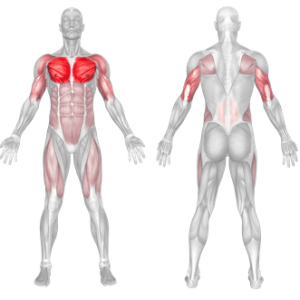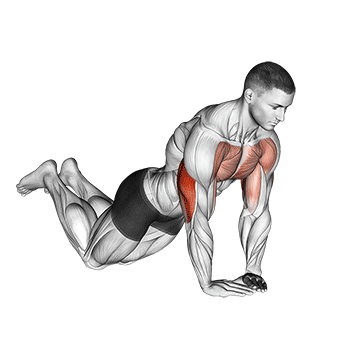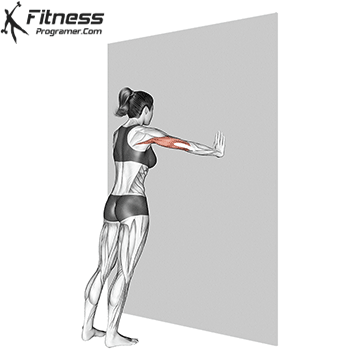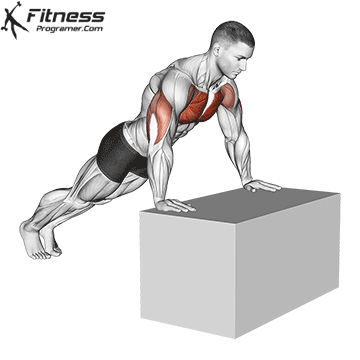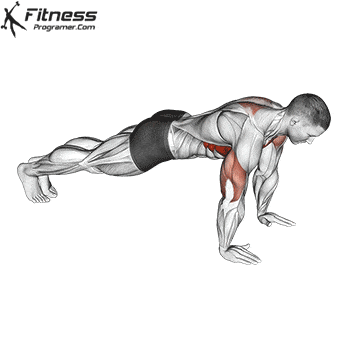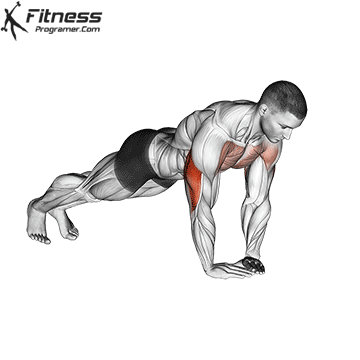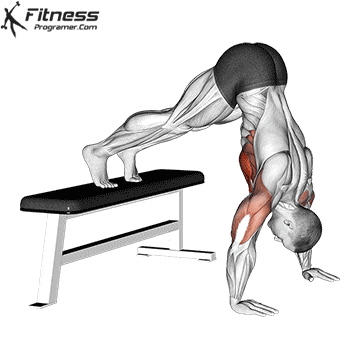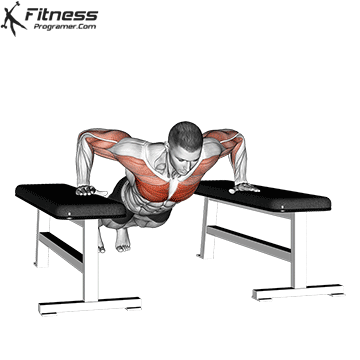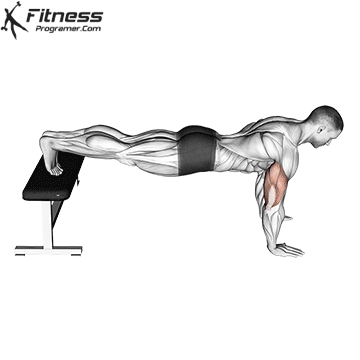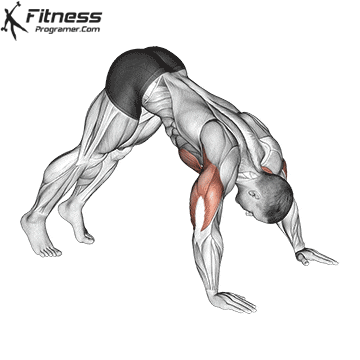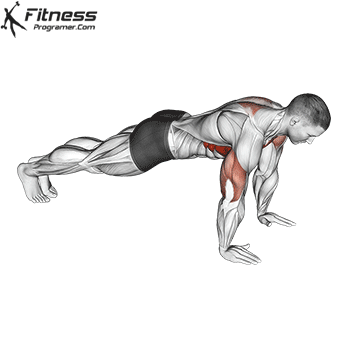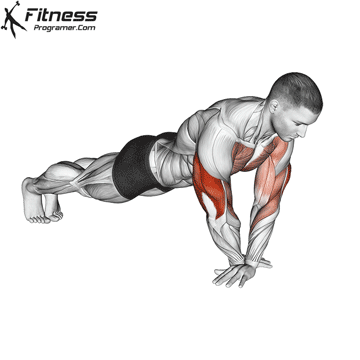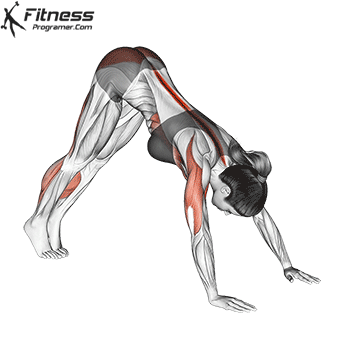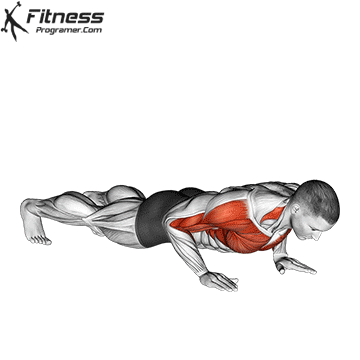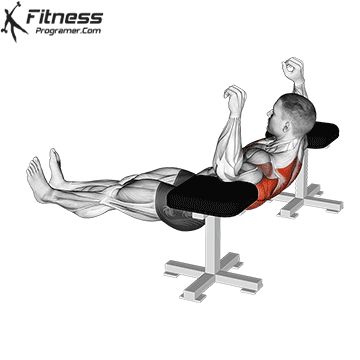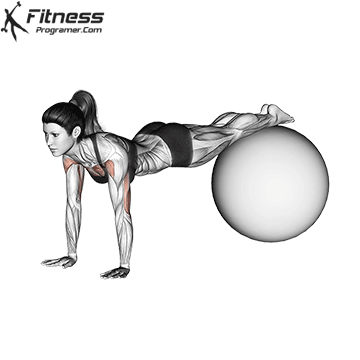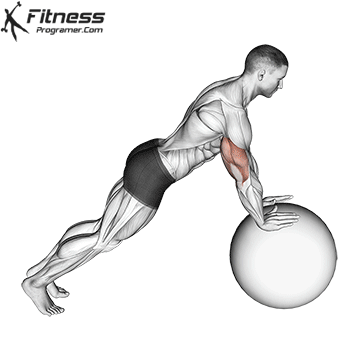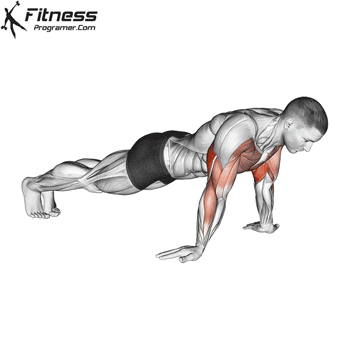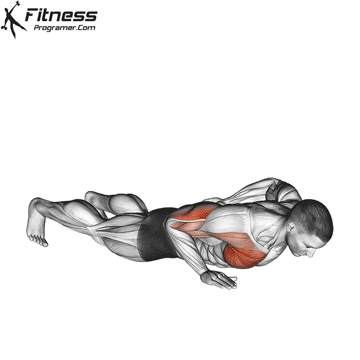Kneeling Push-Up Overview
The Kneeling Push-Up is a beginner-friendly variation of the standard push-up. By reducing the amount of body weight lifted, it helps build strength and improve form in the chest, shoulders, triceps, and core. This modified push-up is excellent for beginners, those recovering from injuries, or individuals looking to practice proper push-up mechanics before progressing to more advanced variations.
How to Perform the Kneeling Push-Up
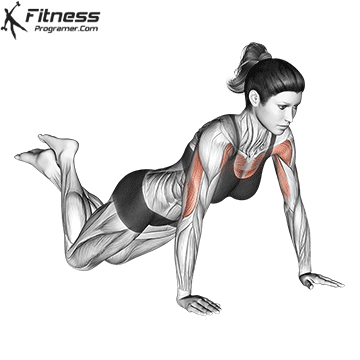
Setup
- Start on your hands and knees on a comfortable surface, such as a mat.
- Place your hands slightly wider than shoulder-width apart, ensuring your fingers point forward.
- Position your knees on the ground and keep your feet relaxed.
Execution
- Starting Position:
- Align your body from your head to your knees in a straight line.
- Engage your core to prevent sagging or arching in your lower back.
- Lowering Phase:
- Bend your elbows and lower your chest toward the floor while keeping your elbows at about a 45-degree angle to your body.
- Descend until your chest is just above the floor or as low as your mobility allows.
- Pushing Phase:
- Push through your hands to extend your arms and return to the starting position.
- Focus on squeezing your chest and maintaining a straight body line.
- Repeat: Perform the desired number of repetitions while maintaining proper form.
Tips for Maximum Effectiveness
- Engage Your Core: Keep your core tight to maintain a straight body line and avoid excessive lower back arching.
- Control the Movement: Perform both the lowering and pushing phases slowly to maximize muscle activation and control.
- Focus on Quality: Prioritize proper form over the number of repetitions to reduce the risk of injury.
- Use a Mat for Comfort: Protect your knees by performing the exercise on a soft surface or exercise mat.
- Progress Gradually: As you build strength, transition to more challenging push-up variations, such as incline push-ups or standard push-ups.
Common Mistakes to Avoid
- Sagging Hips or Back: Keep your body in a straight line from your head to your knees to avoid straining your lower back.
- Flaring Elbows: Avoid letting your elbows flare out excessively to protect your shoulders. Aim for a 45-degree angle from your torso.
- Shallow Reps: Lower your chest as close to the ground as possible for full range of motion.
- Improper Hand Placement: Ensure your hands are slightly wider than shoulder-width apart and aligned with your chest.
- Holding Breath: Maintain steady breathing throughout the exercise to improve performance and avoid fatigue.
Benefits of the Kneeling Push-Up
- Beginner-Friendly Exercise
- Reduces the intensity of a traditional push-up, making it accessible for those with limited upper body strength.
- Improved Form
- Helps beginners focus on proper technique, such as alignment and elbow positioning, without the strain of a full push-up.
- Strength Development
- Builds strength in the chest, shoulders, and triceps, creating a foundation for more advanced push-up variations.
- Core Activation
- Engages the core to stabilize the body, improving overall stability and posture.
- Joint-Friendly Option
- Reduces pressure on the wrists, shoulders, and elbows, making it suitable for individuals with joint issues or injuries.
- Scalable Exercise
- Can be used as a warm-up, recovery exercise, or a stepping stone to standard push-ups and beyond.
Kneeling Push-Up Muscles Worked
